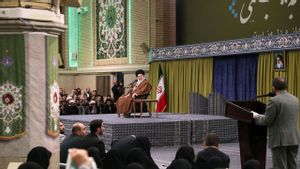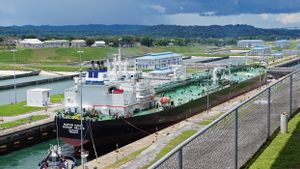JAKARTA - The region of West Java Province is listed as the area with the most active occurrence of earthquakes in Java Island based on records from the Meteorology, Climatology and Geophysics Agency (BMKG) in the last 2 years since 2019.
"Based on data on the distribution of earthquake activity in Java since 2019, it appears that the West Java region is the area with the most active seismic activity," said BMKG Head of Earthquake and Tsunami Mitigation Daryono, quoted by Antara, Wednesday, July 22.
He explained that earthquake activity in West Java did not only occur in the megathrust zone but the frequency of shallow crustal earthquake activity due to active fault activity was also very high.
BMKG data shows, since January until now, there have been more than 35 earthquake activities in West Java and Banten whose shocks were felt by the community.
"With the increase in earthquake activity in this area, residents should always be vigilant. Residents must understand how to survive an earthquake," he said.

Furthermore, Daryono explained, earthquake activity did not actually kill and injure, but houses with walls with weak structures could collapse and hit the occupants.
On Tuesday, July 21, at 20:21 WIB, the Sukabumi area of West Java was rocked by an earthquake with a magnitude of 2.8. The epicenter is located at coordinates 7.02 latitude and 106.96 east longitude, precisely on land at a distance of 10 kilometers southeast of Sukabumi City at a depth of 9 kilometers.
By paying attention to the location of the epicenter and the depth of the hypocenter, it appears that the earthquake that occurred was a shallow crustal earthquake in the Cimandiri Fault zone.
In the last few years, Sukabumi and Lebak have experienced an increase in earthquake activity.
"Because the Sukabumi and Lebak areas are earthquake prone areas, it is mandatory to build earthquake resistant buildings," he said.
If there are residents who have not been able to build earthquake-resistant houses with strong structures, there are other options, namely to build houses from light materials such as wood and bamboo which are designed to be attractive.
"This is a way for us to be in harmony with nature which is prone to earthquakes so that we can survive when an earthquake occurs," said Daryono.
The English, Chinese, Japanese, Arabic, and French versions are automatically generated by the AI. So there may still be inaccuracies in translating, please always see Indonesian as our main language. (system supported by DigitalSiber.id)













